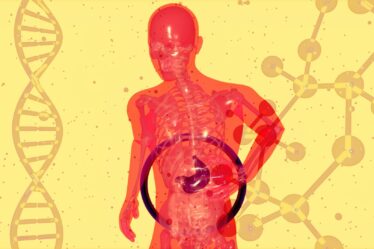
The popularity of biopolymer injections as a cosmetic procedure has increased significantly in recent years. Due to their accessibility and nature, biopolymer injections—often presented as a non-surgical substitute for more invasive procedures—have grown in prominence.
However, there are issues regarding these chemicals’ security and long-term implications. When contemplating biopolymer injections as a cosmetic choice, evaluating the potential health hazards is critical.
This blog discusses the potential adverse effects of biopolymer injections.
Difficulty in Diagnosis and Treatment
Due to the procedure’s unique nature and potential complications, diagnosing and treating health issues potentially caused by it can be challenging for healthcare professionals.
- One of the primary reasons for difficulty in diagnosis is the nonspecific nature of symptoms that may arise from bipolymer injections. Complications such as pain, swelling, discoloration, hardening, or stretch marks can present that overlap with other conditions. Healthcare professionals must be extremely vigilant and competent in identifying and differentiating these issues because this can cause delays or misdiagnoses.
- Furthermore, different materials may be utilized in biopolymer injections, and various polymers may cause various reactions in various people. It makes diagnosis more difficult because it may be necessary to carefully examine every case to determine the precise origin of the difficulties.
- It can be difficult to treat problems brought on by bipolymer injections. The type and extent of the problem will determine whether medication, surgery or a combination of the two is the best course of action. There is no set method, though. Therefore, the treatment strategy must be adapted to the unique circumstances of each patient.
- Addressing issues such as migrated polymers, chronic inflammation, and granulomas may require specialized expertise, necessitating the involvement of experienced healthcare professionals. Open communication, thorough evaluation, and a proactive approach to monitoring and managing complications can help ensure timely and appropriate interventions. In severe cases, biopolymers removal treatment may be the only solution.
Infection
Whenever an invasive procedure is performed, there is a risk of introducing bacteria or other pathogens into the body. Biopolymer injections carry this inherent risk like any other injection or implantation procedure.
Here are some important points to consider regarding infections related to biopolymer injections:
- Contamination: If proper sterilization techniques are not followed, the biopolymer or the equipment used during the procedure may be contaminated with bacteria, viruses, or fungi.
- Surgical site infections: Biopolymer injections sometimes require a surgical approach, particularly when large volumes are administered or when the injections are performed in deeper tissues. Surgical site infections can occur if the surgical area is not adequately cleaned or the wound becomes contaminated.
- Post-procedure care: Managing the injection area following the surgery is essential for avoiding infections. The possibility of infection might be raised by poor wound care, failure to keep the region dry and clean, or by providing inappropriate post-procedure guidelines.
- Patient susceptibility: Because of factors like a weakened immune system, underlying medical disorders, or the consumption of immunosuppressive drugs, certain people may be more susceptible to infections. Injections of biopolymer may make these people more prone to infections.
- Type of biopolymer: The likelihood of infection can vary depending on the features and qualities of different biopolymers. For example, some biopolymers may be conducive to bacterial development; others may contain antimicrobial features that help lower the chance of infection.
- Delayed onset infections: In certain situations, infections might not seem obvious immediately after the injection. Since symptoms may take some time to appear after the treatment, it’s crucial to keep an eye out for any infections at the location of the injection and seek help if needed.
- Infection severity: Biopolymer injection-related illnesses may vary in complexity from minor localized infections to more serious or systemic infections.
Inflammation and Allergic Reactions
This localized inflammation may result in pain and temporary interruption in the treated location. Additionally, some individuals may experience allergic reactions to the polymers used in the injections. Allergic responses can manifest as itching, hives, and, in rare cases, severe anaphylaxis.
These reactions highlight the importance of carefully considering the materials used in bipolymer injections and their potential risks. Prior consultation with healthcare professionals is essential to assess any allergies or potential adverse reactions, ensuring the safety and well-being of individuals seeking such procedures.
Granulomas and Nodules
When foreign substances, such as polymers, are injected into the body, the immune system may react by forming small localized inflammatory nodules known as granulomas.
Granulomas, the body’s immune system’s reaction to the invasion of foreign substances, may form around the bipolymer material injected. These nodules can trigger discomfort, agony, swelling, and aesthetic abnormalities and come in various sizes. Granulomas occasionally also impair the ability of the tissues or structures around them to operate.
The type of polymer utilized, the injection technique, and the unique patient characteristics can all impact how granulomas and nodules develop. They may develop soon after the injection or appear months or years later.
Chronic Inflammation and Fibrosis
Some polymers can bring on a chronic inflammatory reaction that lasts for a long time after they get injected into the body.
Multiple consequences can result from chronic inflammation. At the injection site, the continued inflammation may result in discomfort, agony, and edema. Additionally, it might cause an excessive amount of scar tissue to form, which would cause fibrosis. The extra collagen fibers that develop during fibrosis can cause the surrounding tissues to stiffen and thicken.
Chronic inflammation and fibrosis can negatively affect appearance, functionality, and well-being. The affected area may become distorted or asymmetrical, resulting in cosmetic concerns. Depending on the location and extent of fibrosis, the functionality of the surrounding structures or organs may be compromised. For example, if bipolymer injections are performed near joints or critical organs, fibrosis can restrict movement or impair organ function.
Migration and Displacement
Depending on the specific type of polymer used and the injection technique, there is a risk that the injected material may migrate from its original site or become displaced within the body. It can lead to asymmetry or uneven distribution of the injected substance, resulting in aesthetic concerns and potential health issues.
When bipolymer injections migrate or become displaced, they may cause distortions in the surrounding structures or tissues. Depending on the migration location, it can lead to cosmetic deformities or functional impairments. For instance, if the injected material migrates near vital structures or organs, it can pose a risk of damage or obstruction.
Conclusion
Biopolymer injections carry potential health implications that should not be overlooked. The diverse nature of these health implications requires individuals to consult with qualified healthcare professionals who can provide accurate information, evaluate the procedure’s suitability, and offer appropriate guidance.
Thorough assessment, informed decision-making, and diligent monitoring are essential to minimize the potential risks and ensure the safety and well-being of those considering bipolymer injections. It is crucial to prioritize open communication, seek expert advice, and remain proactive in addressing any complications arising from these injections.



